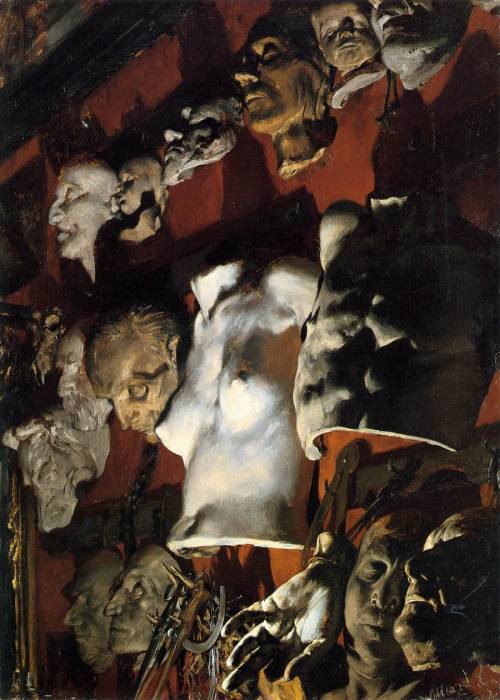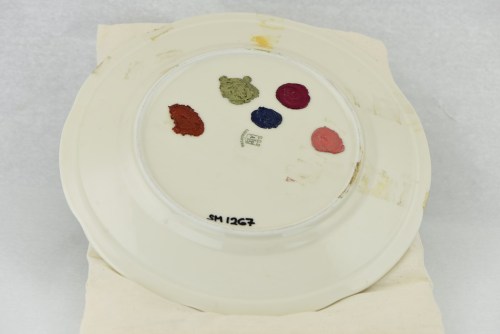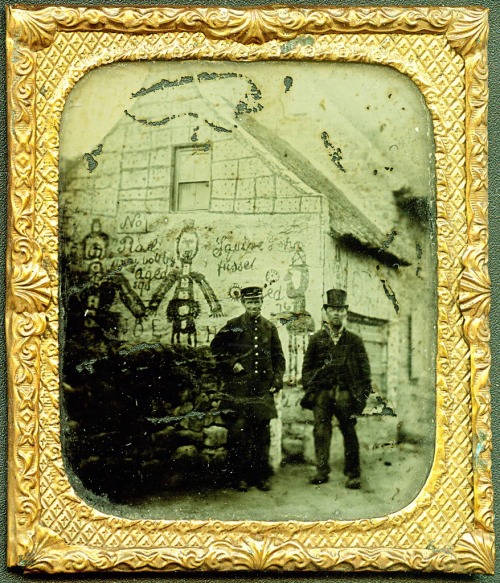This is the digital wunderkammer of swedish artist Jonas Liveröd. It is an extension of the physical museum which is only open during the summer months. But luckily this digital sibling is open all year, so WELCOME! www.luftslottet.vision
Mask week! Starting off this weekend is a set of amazingly powerful and enigmatic masks. The top is a Drum Dancer by Peter Alooloo, made in 1962 on Baffin island. Second is a mask from 19th century Guatemala that carries strangely close ties to roman and greek classic sculpture. Finally is this first selection is a Sanni Demon Mask, from Sri Lanka, this one is a 19th Century Disease and illness demon masks are used in exorcist ritual. It comes from the former collection of the intriguing swede Rolf De Maré. Next up: The Vatican cabinet of masks mosaic!
Tune in, Turn on, Drop out: A likishi Iya radio in Zambia, 2016. Within the Zambian traditions of likishi (ancestral spirits) there are more than one hundred different characters, each with its own role, history, and symbols. The one here was photographed in 2016 and depicts a radio/cassette player, honouring the important role, mobile radios have played since their introduction to the Zambian people. The photographer, Martin Vorwaerts, documented the whole creation process and performance of this masquerade in 2016 during his field-research for his Ph.D. on these makishi masquerades.
The Anatomy of Sculpture: The painting Studio wall from 1872 was Adolph Menzels own favourite among his hundreds of artworks. Depicting a dramatically lit wall of the German artists work space, it presents a collection of death masks and eeire detached plaster casts of body parts and carnevalesque masks.
The party is over: The incredible unswept floor mosaics of Rome. Most mosaics tell stories of grandeur and beauty. But this particular type of mosaic floors tells us about the aftermath of the party. In hyper detail nutshells, olive pits, chicken feet, fruit rinds, and grape stems are strewn about in trompe l’oeil mosaic.
This is called asarotos oikos, or “unswept room” in Greek. Although Greek artists made the first “unswept room” mosaics, only later Roman copies survive.
So why would an elite Roman go to such effort and expense to make their dining room floor look like it was covered in messy left-overs?
Partly it was a kind of status symbol. These mosaics where made on the floors of triclinia, the dining rooms in upper class ancient Rome where party guests lounged on couches, picking at delicacies. This particular floor was unearthed among the remains of a roman villa and still emanates some of the atmosphere of the decadent boozy Roman banquets. The scraps of food cast long, erratic shadows in different directions, as if lit by the dancing flicker of oil lamps. It is definately no low budget feast - there’s fresh seafood, rushed in from the coast, including lobster and oysters, and strewn among the shells are expensive imports such as mulberries from Asia, ginger from India, and figs from the Middle East. The riches of a whole empire are scattered on the floor.
The mosaic implies a feast so lavish that, if it were actually served, it might have been illegal — a violation of Roman sumptuary laws, which capped how much a host could spend on any one banquet. The Lex Orchia, passed in 182 BC, limited the number of guests that could be invited to a single meal. But based on the accounts of roman feasts these rules were frequently flouted.
The motif is also part of the memento mori tradition - reminder of death. In the classic roman story Satyrion, the host of a huge party says “Alas for us poor mortals … So we shall all be, after the world below takes us away. Let us live then while it goes well with us.”
From this perspective, the mosaic was a demonstration that even the finest feast is quickly transformed from sustenance into trash, just as the diner will be reduced in time to bones and dust. In other words, enjoy yourself, because it might be the last time.
The fascinating room scene included here is believed to be from a 5th century dining room floor. It shows an actual dinner in progress with an asaroton floor design in the room—OR does it show a dinner with a very messy bunch of people who have actually thrown their food on the floor? Its quite a “meta” take on the style.
Sk8 or die: The incredible DIY skateboards of Mongu. A few years back a bunch of kids from a town called Mongu in Zambia donated their selfmade skateboards to fundraise for building the Lukaba Hande skatepark. These boards are amazing manifestations of creativity, invention and the desire to roam free. The park was built by the non-profits Wonders Around The World and Skate World Better during the project Weskate Mongu.
Gnarly teeth: The raw power of Son Fords skull sculptures. Born in 1926 in Eden, Mississippi, a village in northern Yazoo County James “Son Ford” Thomas was a gravedigger, sharecropper, blues musician and self-taught artist rooted in the deep south. He is most know for his delta blues, but his small sculptures carry a power of their own. As a child, James Thomas earned his nickname by modeling Ford tractors out of the red “gumbo” clay found in the hills of Yazoo County and throughout his life he would continue to use the clay of the land he lived in to create his sculptures. He sculpted native animals, such as birds, alligators, and rattlesnakes, as well as funerary figures and busts, but in particular his skulls with human teeth have a raw power that radiates of the hoodoo folk religion he was a part of. Hoodoo as opposed to Voodoo focuses on the power of the head and skull and the mythology surrounding Son Ford tells of him having powers to give and cure sickness through hoodoo. Mythology also has it that he collected the teeth for his sculptures while working his gravedigger shifts, but in reality he was supplied by local dentists. Thomas’s skulls live in a peculiar place, unequivocally between ghoulish and absurd. Each a hefty lump of clay crudely worked into the shape of a skull, they are squat and feel as though each of their identities comes from being mashed down to their very core.
As above, so below: Beneath a plain looking house in Las Vegas there is a secret entrance to a much more extravagant vision of living. The underground space, which is found some meters below surface level is a family home decked out in ‘70s style, as well as a mock backyard, a pool and a guest house. There’s no natural sunlight, but the home’s faux-sky mimics morning, noon and night — complete with sparkling stars — depending on time of day. As for nature, tacky murals of green pastures, forests and mountains decorate the walls. Envisioned by underground living enthusiast Girard Henderson, the home was designed to provide paranoid luxury in the event of nuclear war.









